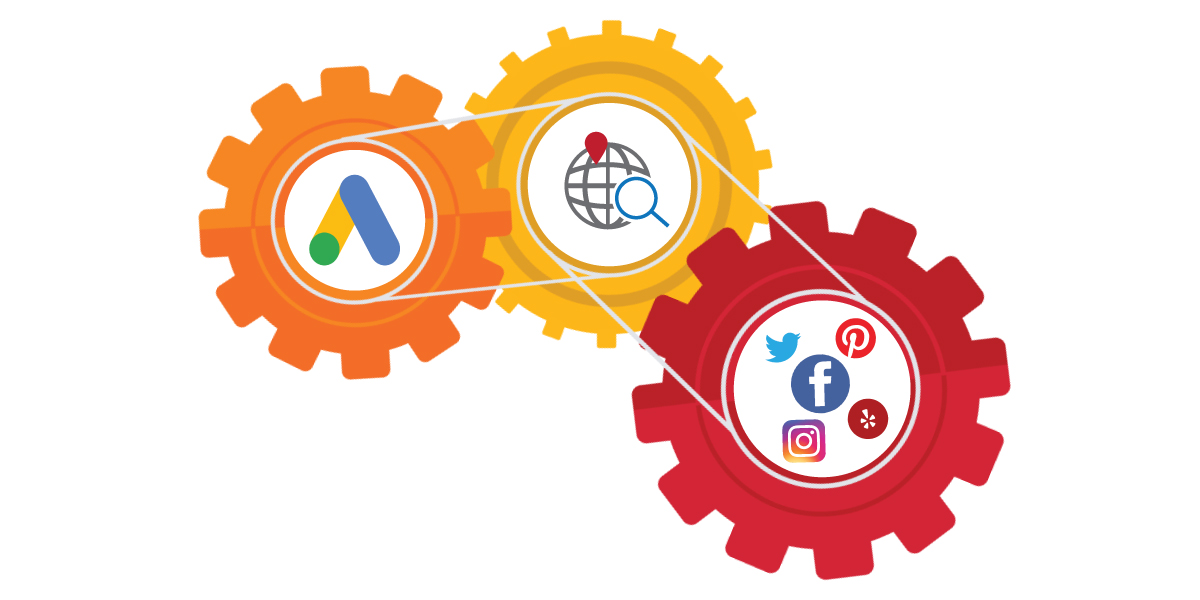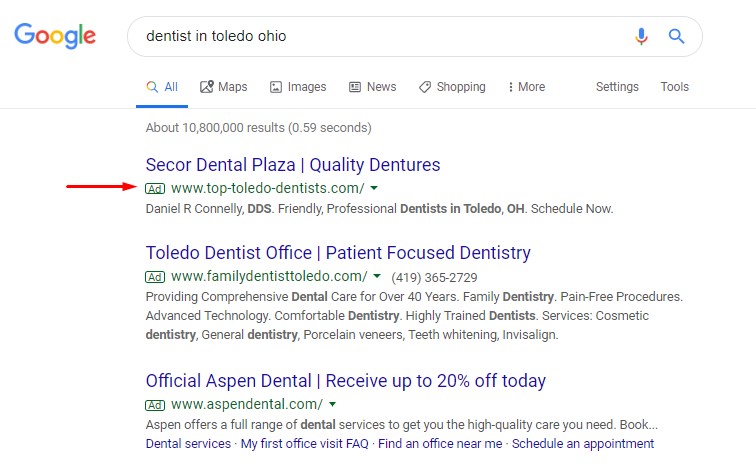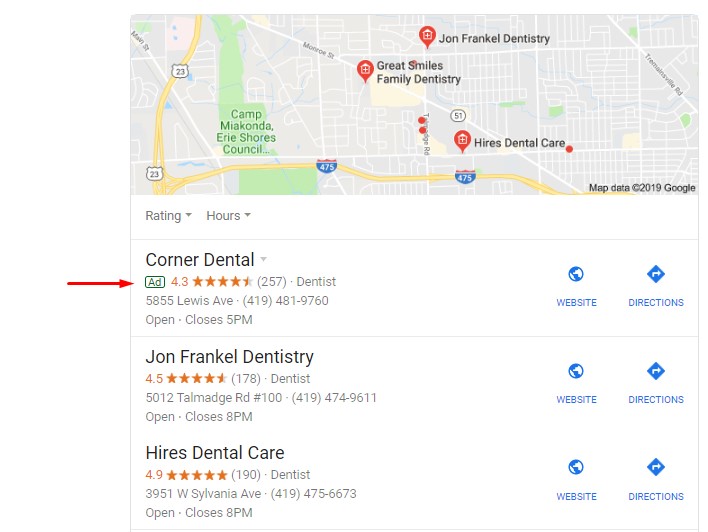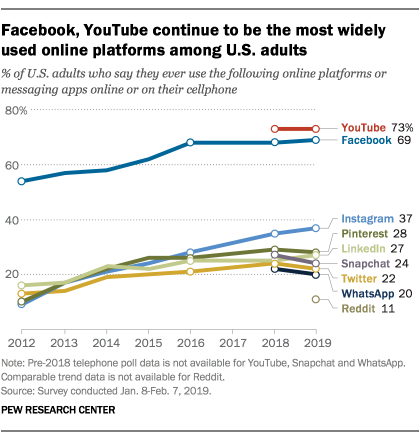SEO, Google Ads, and Social Media Ads: When and Why to Use Them

In the digital world, so many options are available for marketing your business, services, and products. And it’s super important that you get involved in online marketing. So, how do you decide where to start?
Let us help you by defining some popular options along with when and why you should use them to help your business.
Google Ads are online ads that require you to pay for each click your ad receives. They direct customers to your website and are great for showing up immediately in the search results on Google and to get your business in front of people who are shopping for your services.
Social media ads are different in that you pay for the reach they receive - how many people they are shown to. And these are awesome for increasing brand awareness and directing traffic to your website.
Search engine optimization (SEO) is how you get your website to show up on Google organically - in the regular search results without paying sums of money for ads - but it can take a long time to do this. Showing up well on Google organically is the ultimate win for businesses in their digital marketing campaigns.
Before we dive deeper into each of these, it's important to know that choosing just one digital marketing strategy may not be the best solution to get the results you're looking for. These strategies work hand-in-hand together and complement one another to bring you the best leads for your business. Rand Fishkin wrote a great article explaining this further, "When Choosing Marketing Channels, Visualize the Curve." We definitely recommend checking that out as you try to get started with a digital marketing strategy.
Alright, now we can dive in!
Google Ads
Google Ads is an online advertising platform that allows you to set up ads to direct web users to your website. The great benefit of using Google Ads is that it puts you in front of customers who are demonstrating strong intent to make a purchase, schedule an appointment, etc. People go to Google to shop, so it’s important to make sure that you are showing up whether that’s with ads or SEO (more on this later).
The cool thing about Google Ads is that it has powerful targeting capabilities. You can show your ads to your specific audience by defining the location, age, gender, income, and interests of your target customer.
Many business owners start Google Ads to show up and increase online sales and conversions but make the mistake of poorly targeting their audience and end up wasting a lot of their advertising dollars!
Another mistake many businesses make with Google Ads is not monitoring or measuring their results.
Using free tools such as Google Analytics and the built-in conversion tools provided by Google Ads, you can really analyze the effectiveness of your campaigns, like what key phrases are generating the best engagement and leading to conversions. You should be measuring, analyzing, making changes, measuring and monitoring again, etc. If you aren’t doing this, you will end up wasting a lot of money.
There are a few different types of Google Ads that businesses can try out:
1. Search Ads
Search ads are the typical ads that you see when you do a Google search and the top results show the little “ad” indicator to the left of the URL.

2. Local Ad Extensions
Local ad extensions are an added feature that you can take advantage of with your search campaign. They allow your business to show up in the map pack (shown below) when it would be difficult to do so otherwise, like if you aren’t the nearest dentist to the searcher. These are super helpful for showing up in nearby cities and neighborhoods.

3. Display Ads
Display ads show up across other websites, typically in a sidebar and sometimes within the content of a website. These are displayed to users that have performed a search for your services or have been on your website before. These are great for generating brand awareness, but don’t often convert into direct sales because of the user intent. If someone is reading through a blog and your ad shows up, it reinforces your brand, but that user isn’t typically shopping for your services or products at that time so they aren’t as likely to click.

4. Mobile Ads
There are a couple different types of mobile ads: Universal App Campaigns and Call-Only ads.
Universal App Campaigns are used to generate more installations of your company’s app. So if you don’t have an app, that’s probably not for you.
Call-Only ads are great for any business that wants to generate more phone calls. These ads only show up on mobile devices and display your phone number instead of an ad headline to entice users into clicking and calling.
5. Video Ads
Video ads allow you to run ads on YouTube videos and across the display network (like the display ads mentioned earlier). Learn more about Google’s video ads here.
6. Remarketing
Another cool way you can utilize your Google Ads is by remarketing any of these ads to people who have already visited your website. This is especially handy to capture those who have been on your site but weren’t ready to make a purchase. So you can “remarket” to them and display your ads to them when they are searching again to buy your products or services. Learn more about remarketing from Google's Help Center.
With search ads, including local ad extensions and mobile call-only ads, you typically pay for each click that your ads receive. For display and video ads (remarketing ads typically fall under this category), you pay for the amount of impressions your ads get, or how many people see them. You can target your ads with specific keywords and demographics. However, depending on your market and how much competition there is, this can get pretty expensive.
If you have a brand new website that you are trying to get sales or leads on, Google Ads can be a great starting point to help with this. The reason being that your website isn't going to show up on Google right away, so you may want a supplemental strategy to get you going. It takes a long time and a lot of effort to show up in the organic search results, especially if there's heavy competition in your market.
What You Need To Know Before Starting Google Ads
Google Ads is a great way to get fast results, and you can get a campaign running within an hour. But it isn’t for everyone, and it can be a very expensive long-term strategy.
You need to evaluate if it would work for you based on the average cost per click for your key phrases, your conversion rate, your average order size, your profit margins and the lifetime value of a new customer. For instance, maybe the cost per order will eat all of your profits on that initial order - or even cost you money - but if you have a high likelihood of selling to that customer again, it might be worth it. You need to determine if the costs of the ads you're paying for are worth it based on the return you get out of them.
Google Ads can be a very expensive long-term strategy. Some businesses use it long-term and make it profitable, but we would never encourage anyone to use it as their only digital marketing channel.
When To Use Google Ads
- When launching a new business, product, or service and you need immediate results
- To quickly generate more online sales for phrases for which you don’t rank organically (only if your ROI is good)
- To generate more brand awareness (especially with the help of display ads and remarketing)
Social Media Ads
To get started with social media ads, you need to know your audience and where they spend their time on social media. Is your audience mostly teens who spend a large amount of free time on Instagram or homeowners who are primarily on Facebook?
Pew Research has a study that tells us the most used social media platforms among adults of various ages. Learn where your primary audience is spending their time on social media, and use that to your advantage.

Social media ads are growing wildly popular, and while we don't feel they are the greatest for direct conversions, they can definitely have their place in your digital marketing strategy.
The reason we say social ads aren't necessarily great for direct conversions is that when people are using social media like Facebook and Instagram, they aren't typically “shopping” for new products or services like they are when they’re on Google. Their intent is usually to connect with friends, read the news, or to be entertained, not to make a purchasing decision. Sometimes they will ask for recommendations on social media sites, but most people use a search engine like Google when trying to find a product or service provider.
According to a study from Forrester in 2016, 71% of consumers start their journey for new products and services using a search engine, and 74% of consumers reported using a search engine for when they were ready to make a purchase. Most experts agree that these numbers have only gone up.
That being said, social media ads can be a great tool for brand awareness. As people are scrolling through Facebook and they see your business name or logo in their news feed it may not stand out initially, but after they've seen it a few times they may start to recognize it when they see it in other places (hint: like when they are searching on Google for a new service).
Social media ads typically have three primary objectives:
- Awareness: To build awareness for your brand and increase your reach.
- Consideration: To send traffic to your website, increase engagement, generate leads, encourage application installs or encourage people to connect with you
- Conversion: To create more conversions online and drive traffic to your physical stores.
These platforms do a better job of building awareness and consideration than leading to direct conversions - for most people. They are a great way to grow your online reach, increase followers and even generate leads - but you will need a strong process to follow up, nurture and develop those leads.
Social media is also a great place to share new content you've created on your website. Whether that is a how-to video, new product photos, new promotions, or a helpful article, these can all be great things to "boost" as an ad on Facebook or Instagram to help with the consideration goal of generating more traffic to your website. This is great for building your brand and establishing yourself as an authority in your niche or industry.
The nice thing about social media ads is that they are fairly inexpensive and can be targeted to specific audiences. Much like with Google Ads, on social media you can target specific audiences by age, gender, location, and specific interests/roles.
Social media also has the huge benefit of showing potential customers their friends that are connected to your business. Seeing that someone they know and respect has engaged with your company via a like, comment, share, review, etc. is very powerful. More powerful than just the sheer number of those social signals, it's more personal and transfers some trust from that friend to your business.
When to Use Social Media Ads
- When your business is new to an area
- To build brand awareness and authority in your niche or market
- To increase your reach beyond your social media followers
- To drive more traffic to your website
- To generate more conversions
Search Engine Optimization (SEO)
We believe SEO should be part of every business's long term strategy. This is how you can show up organically in the place where online users show that “shopping” intent without having to pay Google for ads to get you on page one.
Not sure what SEO is? Check out this article from Moz to learn more.
The main concern that business owners have with SEO strategies is that they take a lot of work upfront without a ton of return initially. But after several months when you start getting phone calls from your website listings rather than paying for ads, the benefits start to outweigh the costs.
Decreased Cost Over Time
Over time, the cost of acquiring a new customer decreases for SEO. As the strength of your website and domain grows, traffic starts to build and compound, and the return on your investment really starts multiplying.
This makes it much different from Google Ads or social media ads. The longer you use ads, you do gain some benefits from optimizing your campaigns, but they never start generating traffic exponentially the way a good SEO campaign can.
This is why Google Ads and even social media ads can be great supplemental strategies for your long-term digital marketing plan. Google Ads helps you to show up on page one of the search results before your SEO signals really start taking effect. Social media ads strengthen and amplify your brand to help people to recognize you so that when they do find you in a search on Google they are more likely to click on you.
There is a lot that goes into SEO, and the work that you do here compounds over time, so it’s important to get it started as soon as you are able to.
Get Started
Not sure where to start? Here’s a helpful article about things that you or your web developer can do on your website to build a good foundation for SEO and start ranking your website on Google (though there is a lot more to it than just that).
If you’d like to learn more about SEO and how we can help your business show up on Google, give us a call today.


